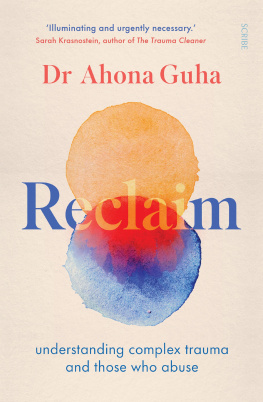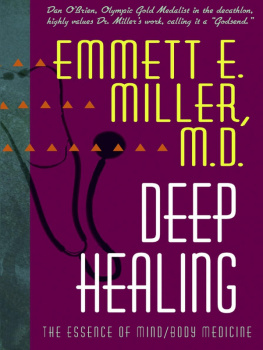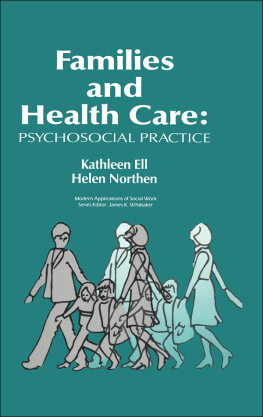PSYCHOSOCIAL CAPACITY BUILDING IN RESPONSE TO DISASTERS
PSYCHOSOCIAL CAPACITY BUILDING IN RESPONSE TO DISASTERS
JOSHUA L. MILLER
COLUMBIA UNIVERSITY PRESS NEW YORK

COLUMBIA UNIVERSITY PRESS
Publishers Since 1893
New York Chichester, West Sussex
cup.columbia.edu
Copyright 2012 Columbia University Press
All rights reserved
E-ISBN 978-0-231-51976-2
Library of Congress Cataloging-in-Publication Data
Miller, Joshua (Joshua L.)
Psychosocial capacity building in response to disasters / Joshua L. Miller.
p. cm.
Includes bibliographical references and index.
ISBN 978-0-231-14820-7 (cloth : alk. paper) ISBN 978-0-231-14821-4 (pbk.)
ISBN 978-0-231-51976-2 (electronic)
1. Disaster victimsPsychology. 2. DisastersPsychological aspects.
3. Stress (Psychology) I. Title.
HV553.M55 2012
363.3486dc22 2011012294
A Columbia University Press E-book.
CUP would be pleased to hear about your reading experience with this e-book at .
References to Internet Web sites (URLs) were accurate at the time of writing. Neither the author nor Columbia University Press is responsible for URLs that may have expired or changed since the manuscript was prepared.
CONTENTS
AFTER HURRICANE KATRINA STRUCK the Gulf Coast in late summer 2005, the landscape was shattered almost beyond recognition. The winds and floodwaters had tossed objects and structures haphazardly across the countryside: large fishing boats were stranded on hills or snagged in the branches of trees and houses had been blown into the streets. Glass, wood, metal shards, downed power lines, and contaminated mud made walking and driving hazardous. In the hot, sultry air, swarms of love bugs stuck to clothing and flesh.
A few days after Katrina made landfall, what I saw in coastal Mississippiparticularly, Biloxias a Red Cross mental health counselor was overwhelming for even the most seasoned of responders. Many houses were completely destroyed or severely damaged. At first glance, neighborhoods appeared to be deserted but often were in fact behind hills of rubblesoggy sofas, moldy carpets, water-stained dolls and stuffed animals, mildewy clothingdeposited on front lawns. There were signs of life indicated by makeshift tents, tarps, shelters, and even open hammocks. The homes left standing had Xs painted on their exterior walls, around which numerals tallied the occupants and the deceased.
Those residents who remained, camping inside or outside of their damaged homes and apartments, were stunned and shocked, isolated from their families, friends, and neighbors. They surveyed the destruction but did not know how to respond. All essential services had been disrupted. The water supply was so badly contaminated it was not only undrinkable but risky for bathing. A power outage meant residents had no fans or air conditioning to counter the oppressive heat. The remaining supermarkets, banks, stores, and ATMs were closed down or inoperable, leaving residents without food or money. Near the beach, steel girders that had once framed office buildings or large chain stores were all that was left standing.
The hurricane shattered support systems and communications. There was no public transportation, no telephone or cell phone service, no Internet connections or e-mail. Schools, set to open for the fall semester, were either too damaged to open or were being used as shelters. Senior centers, civic organizations, and social services were no longer operating; doctors and dentists offices had been destroyed. Driving was curtailed for lack of gas and, for those fortunate enough to have a gasoline source, there were no working traffic lights. Dodging debris and downed power lines while gingerly nosing through intersections made every excursion a jaw-clenching ordeal. Most people had fled to other parts of the state or country while others were in shelters run by the Red Cross and other charities.
For many first responders, the only analogs to the landscape of destruction were scenes from World War II movies, such as The Pianist. Veterans of the Iraq and Afghanistan wars were reminded of the aftermath of bombings in Baghdad and Kabul. Volunteers and workers from the Red Cross and myriad other organizations, including FEMA (Federal Emergency Management Agency) and similar government responders, found themselves sleeping in churches, makeshift shelters, and, a lucky few, in rooms at local military bases that had withstood the most destructive aspects of the storm and where generators provided electricity.
In addition to those representing government entities or large formal charities, hundreds of private citizens had driven down to the disaster site to deliver clothing or to cook food in their own campers, some vehicles serving as jury-rigged diners in parking lots. Police officers from other communities and states stationed themselves at major intersections and directed traffic.
Despite an influx of donated goods, distribution was difficult. Piles of clothing accumulated outside of shelters and relief staging areas, with dazed residents picking through them under a fierce and unyielding sun. Eventually, rain transformed much of what lay on the ground into an unusable textile soup.
Schools and churches that had sustained minimal damage were used as shelters, often managed by the Red Cross. Displaced families would camp on the floor, forming microcommunities around their cots, self-segregated by race and ethnicitywhites in one hallway, African Americans in another. Yet a third segregated group was young Latino men who worked during the day at construction jobs and returned to the shelters at night to eat and sleep. Most spoke only Spanish, while shelter volunteers and other residents spoke only English. Announcements and notices were sporadically translated. Celebritiessuch as Gloria Estefan, Jimmy Smits, Daisy Fuentes, and Andy Garciawould periodically visit shelters to cheer up the residents. Feelings toward the Latino residents ranged from anger and resentment to gratitude. They were resented for having jobs unavailable to others and yet appreciated for saving lives during the storm and for rebuilding broken communities.
Conspicuously absent from the shelters were the Vietnamese people who had settled along the Gulf Coast. Many worked in fishing or in casinos or operated small businesses. Having endured wars in Vietnam, arduous and dangerous crossings to the United Statesoften in fragile boatsand then prolonged stays in refugee camps, Vietnamese families, friends, and neighbors tried hard to stay together. Many did not speak English, and most storm warnings and subsequent relief notices were not translated into Vietnamese. The porches of Buddhist temples and Catholic churches became de facto shelters, with people setting up camp there. And it was at these places of worship where the Red Cross and other charities distributed food, clothing, and cooking supplies. Marines from Mexico unloaded essential goods there, such as bottled water. Vietnamese American doctors set up makeshift health clinics in the temples.
This is a snapshot of a typical working environment for a Red Cross mental health volunteer after a massive disaster. Although every disaster is unique, they have some common threads: physical damage and destruction, social dislocations, chaos, fear, and numbness. The lattice of social networks, public spaces, civic organizations, and socioeconomic supports is left torn and shattered. The social ecology of the disasterhistory, culture and social structures, and the dynamics of privilege, power, and oppressioncan be seen in the way people respond, such as the segregation within shelters and decisions by Vietnamese residents to stay in their devastated community, resisting another diaspora. Prejudice survives (as expressed by a white man donating clothing: as long as it doesnt go to those Vietnamese, cause theyll just resell them) but may be held temporarily in abeyance (as an African American woman expressed to me: There is still a lot of racism along the Gulf Coast, but when times are hard, people will pull together and help each other out).
Next page








